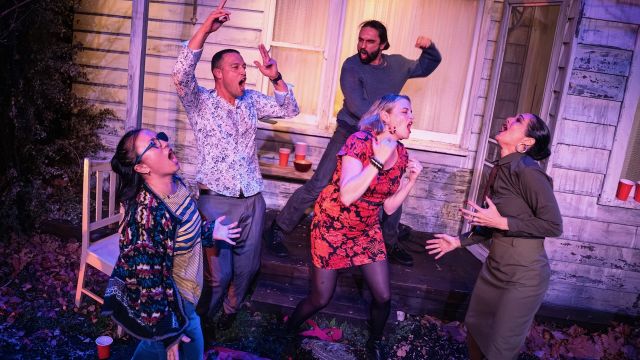The Comeuppance
A dictionary definition of ‘comeuppance’ is ‘deserved punishment, retribution’. But playwright Branden Jacobs-Jenkins does not judge his anxious, unhappy characters as severely as they judge themselves. Instead, he gives us a sad recognition of waste and delusion that is almost Chekhovian. The Comeuppance is a post-Covid play about bad decisions, missed opportunities, nursed resentments and regrets. And as Faulkner said, ‘The past is not dead. It’s not even past.’ But if The Comeuppance is sometimes coruscating, sad and poignant, it is also lively, insightful, and its everyday tragedies are leavened by wisecracks, wit and humour.
Four self-proclaimed ‘outsider’ classmates of a Washington High School - they called themselves the Multi-Ethnic Reject Group twenty years ago - meet up at Ursula’s (AYA) house to wait for a limo that will take them to the big class reunion at the old school. The limo is an up-yours, jokey gesture – a reference to the past when their group showed up at their prom in a limo. Ursula is calm, sweet and warm – a kind of moral centre, but she’s another kind of outsider now because she’s blind in one eye and, as these things go, she will lose sight in the other eye too.
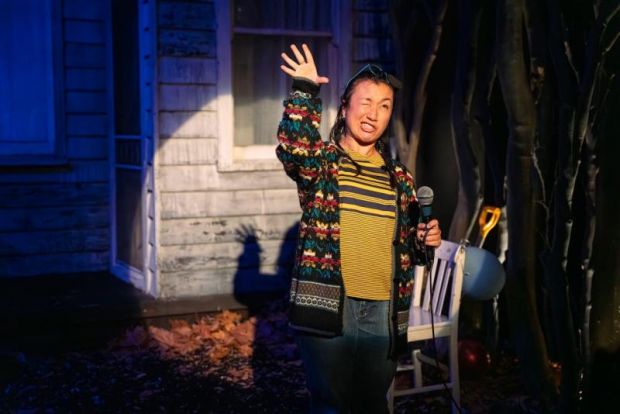
Emilio (Khisraw Jones-Shukoor) is hot-wired, aggressive, the fast talking, anxious catalyst – and the real outsider now; he escaped, he’s been in Berlin for thirteen years and is a (relatively?) successful artist – but curiously reluctant to talk about his work. The others have not escaped. Kaitlin (a beautifully layered performance from Julia Grace) is trapped in a bad marriage, and self-medicating on booze, radiating frustrated unhappiness from behind a brittle front. Kristina (a brisk, whistling-in-the-dark Tess Masters) is a harassed doctor in the military (she shows up in uniform) with no time for anything but her work and her kids. She brings the ring-in - Paco (called Francisco in the program, but an intense, dangerous performance from Kevin Hofbauer), a post-Iraq War veteran with PTSD and subject to epileptic seizures. Kristina’s pretty cool about that.
Each character is sharply individuated, but they are also representative. Each has been affected differently, but they all share the common experiences (which Emilio lists) of COVID and post-COVID, of America’s expensive, futile foreign wars, 9/11, the storming of the Capitol, gun crime – and, crucially, hitting middle-age...
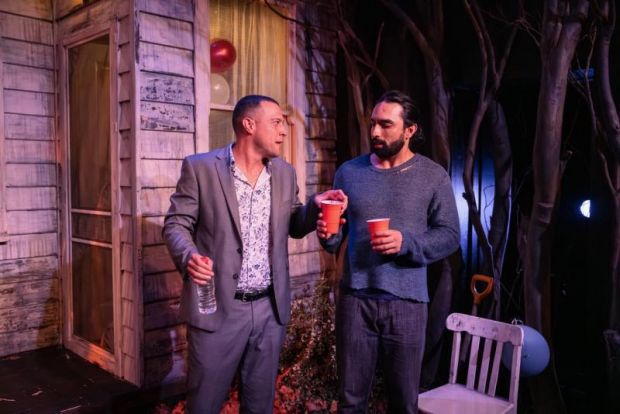
As anyone who’s been to a high school reunion knows, things don’t change that much. There’s curiosity and some nostalgia – else we wouldn’t have reunions – and sentiment, but we discover that we feel much the same about our classmates as we did back then. Males will continue to compete – although nothing’s really at stake now. Misunderstandings, crushes and thwarted love affairs can come roaring back to life – and jealousy never dies. The Comeuppance is a situation, not a story; its plot consists of ever more painful revelations – some laughable, others heartbreaking. ‘If only... What if...’ as Caryl Churchill titled one of her plays.
So it is with The Comeuppance, which plays across two hours real time (with one unnecessary twenty-minute interval – something not included apparently in previous productions). As the classmates gather on Ursula’s dilapidated porch (a beautifully naturalistic but darkly claustrophobic set from Ella Butler) this very fine cast delivers huge amounts of crucial subtext, anxiety and smouldering tensions that inevitably flare into open conflict and even violence.
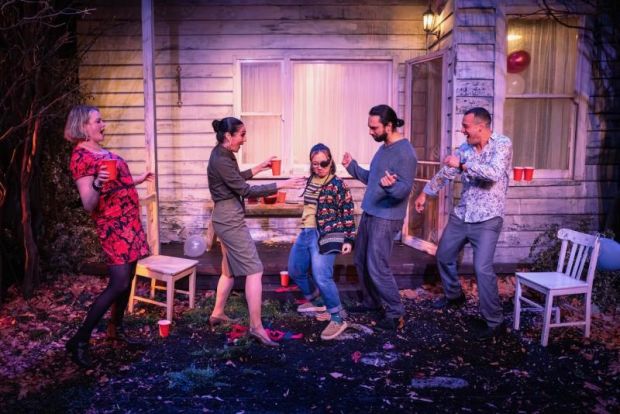
Perhaps director Gary Abrahams pushes this a little too far – although the intention is clear. The understandable anxieties of these people seeing each other after so long are conveyed in rather over-emphatic, speedy, manic performances that risk exhausting the audience and come close to obscuring what the play is about. Any difficulty we might have in engaging is compounded – for me - by having the action freeze intermittently and having each of the cast, not in character, make a direct address to the audience, with microphone and follow spotlight. They drop their American accents and speak objectively, with quite different vocabulary, about their character and their inevitable fate. Each monologue is, in fact, the point of view of hovering Death – the inescapable fate that awaits them all.
Jacobs-Jenkins wants to remind us that all these characters, whatever their current miseries and dilemmas, will die; he’s adding another layer to his story, and he has said that he is no longer interested in subtlety.
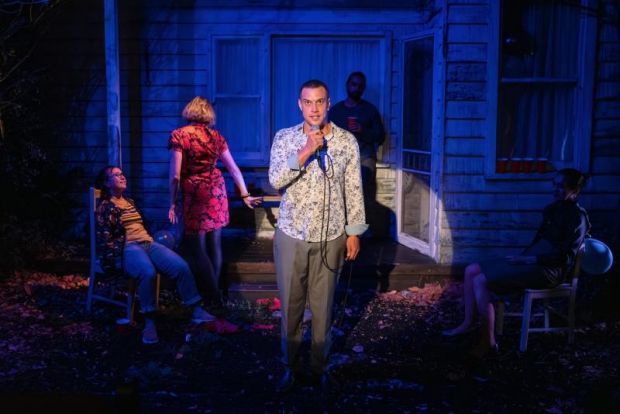
After the interval, the play continues exactly from where it left off, but soon, all passions spent – but not resolved – things become quieter and calmer. Although there can be then some non-defensive honesty that is deeply moving, there is no (phoney) resolution.
Despite what for me are some flaws and puzzling decisions, The Comeuppance is definitely worth seeing for its powerhouse performances and for what it has to say about the strains and stresses of our history, and middle-age malaise.
Michael Brindley
Images: Cameron Grant - Parenthesy
Subscribe to our E-Newsletter, buy our latest print edition or find a Performing Arts book at Book Nook.

